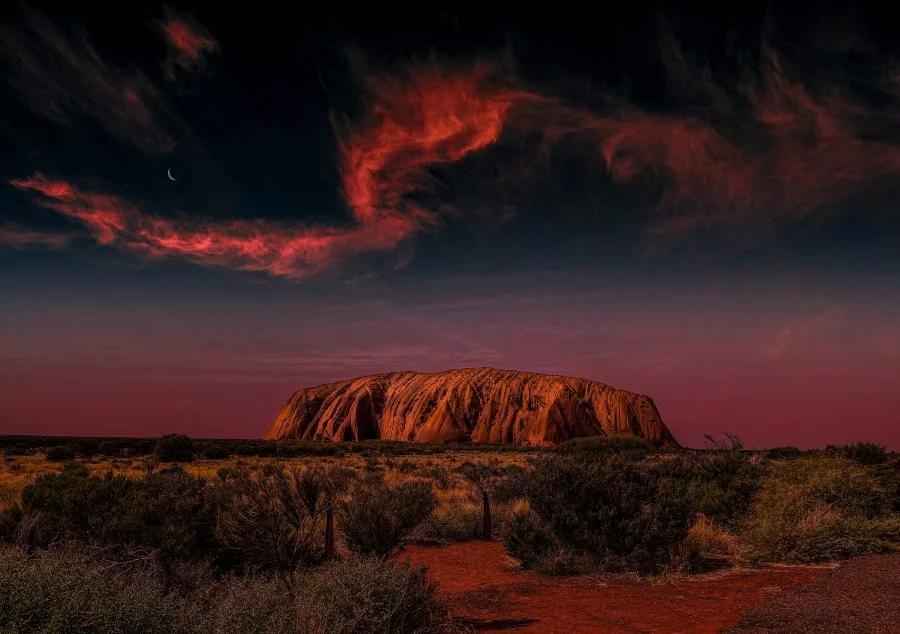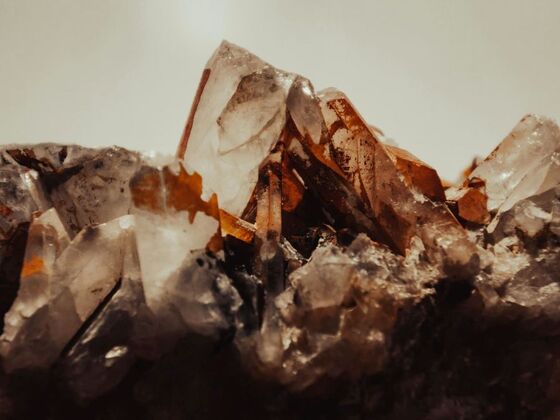Australia stands out as a world-class destination for geology and mineral enthusiasts. Its vast landscapes showcase unique rock formations, rich mining history, and a wealth of natural wonders. Whether you’re a passionate rockhound, an adventure seeker, or simply curious about Earth’s history, exploring Australia’s geological and mineral destinations promises unforgettable experiences. Geotourism and responsible fossicking allow travellers to connect with the land while preserving its beauty for future generations.
Why Explore Australia’s Geological and Mineral Wonders?
Australia invites you to step into a living museum shaped by billions of years of Earth’s history. When you explore its geological and mineral wonders, you don’t just observe, you actively engage with landscapes that tell stories of ancient oceans, fiery volcanoes, and shifting continents.
Embark on an Adventure
- Trek across rugged outback trails and descend into deep gorges where time seems to stand still.
- Climb iconic formations like Uluru and marvel at their sheer scale and colour, especially at sunrise and sunset.
- Dive into the Great Barrier Reef’s coral labyrinths and uncover fossilised secrets along remote coastlines.
Ignite Your Curiosity
- Examine glittering opals in Coober Pedy or hunt for rare black opals in Lightning Ridge, experiencing the thrill of discovery firsthand.
- Join guided tours in historic mining towns to unearth the techniques and tales behind Australia’s mineral wealth.
- Visit museums and interpretive centres that bring geological epochs to life through interactive exhibits and expert storytelling.
Connect with Culture
- Engage with Indigenous guides who share deep-rooted knowledge of the land’s spiritual and geological significance.
- Respect sacred sites and learn how geology intertwines with Aboriginal Dreamtime stories, fostering a deeper appreciation for the land’s living heritage.
Witness Breathtaking Scenery
- Capture panoramic vistas of ancient mountain ranges, dramatic gorges, and vibrant mineral fields.
- Experience the changing colours of the landscape, from the ochre reds of the desert to the lush greens of temperate rainforests.
Gain Insight Into Earth’s Past
- Study fossil sites that reveal the evolution of life on Earth, including some of the oldest known multicellular fossils.
- Observe rock layers and formations that chronicle tectonic shifts and environmental changes spanning millions of years.
Travel Responsibly
- Follow local guidelines and obtain permits where necessary to protect fragile environments and cultural sites.
- Practice sustainable fossicking by leaving sites as you found them and minimising environmental impact.
- Support conservation efforts and Indigenous communities by choosing ethical tours and respecting all posted regulations.
Australia’s geological and mineral destinations empower you to become an explorer, a learner, and a steward of the land. By prioritising safety and sustainability, you ensure these wonders endure for generations to come. Set out on your journey and let Australia’s ancient landscapes transform your perspective and ignite your sense of adventure.
How to Use This Guide
This guide is designed for travellers, rockhounds, families, and students eager to explore Australia’s geological treasures. You’ll find practical tips, must-see highlights, and essential travel logistics for each destination. Before setting out, check local regulations and be mindful of Indigenous heritage sites to ensure a respectful and rewarding journey.
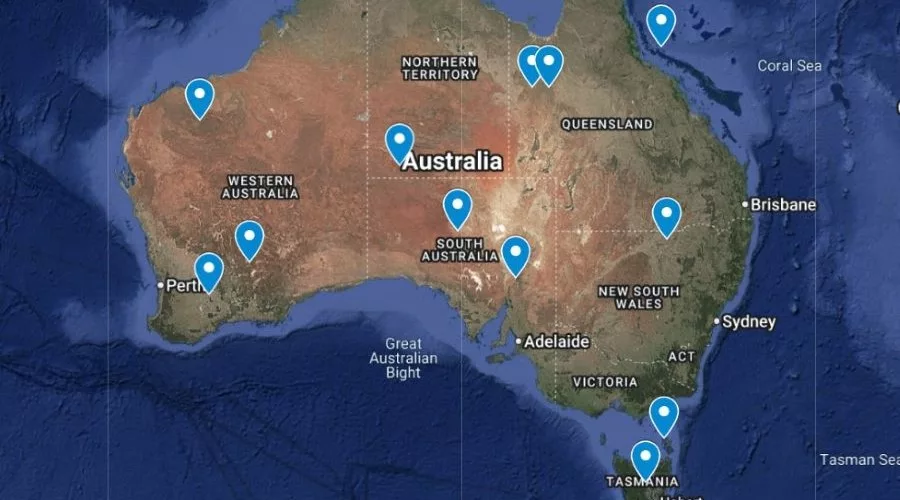
Top 10 Geological and Mineral Destinations in Australia
Uluṟu-Kata Tjuṯa National Park (Northern Territory)
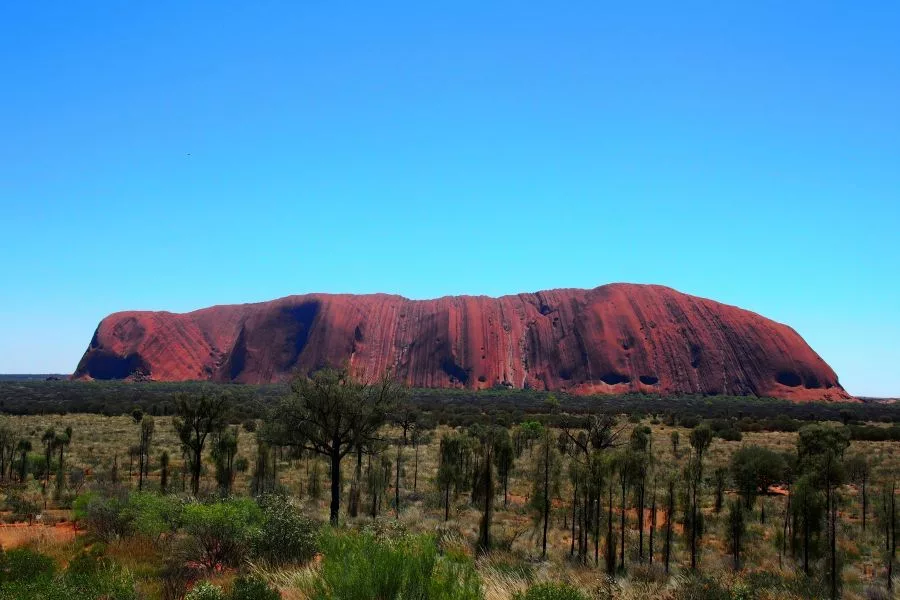
Uluru and Kata Tjuta command the heart of Australia’s Red Centre, rising abruptly from the flat desert landscape and captivating all who visit. These sandstone giants, formed over 550 million years ago, offer a direct connection to Earth’s ancient geological processes. Uluru, also known as Ayers Rock, is a single massive monolith, while Kata Tjuta (the Olgas) consists of 36 domed rock formations. Each is shaped by aeons of weathering and erosion.
By exploring Uluru and Kata Tjuta, you engage with both the geological wonders and the living culture of Australia’s First Peoples. Respectful tourism, guided by local protocols, ensures these iconic sites remain a source of inspiration and reverence for generations to come.
For more information on the guided tours, please visit the Uluṟu-Kata Tjuṯa National Park official website.
Coober Pedy (South Australia)
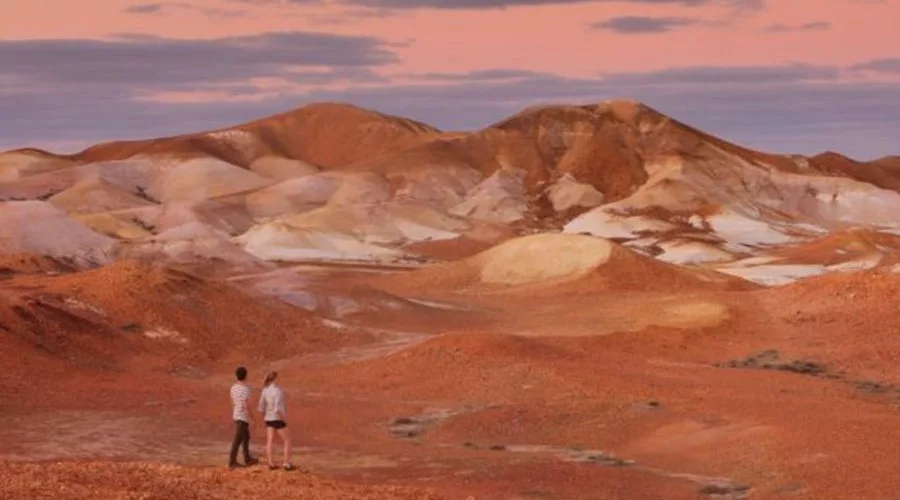
Known as the opal capital of the world, Coober Pedy offers an experience unlike anywhere else on Earth. This remote South Australian town sits atop the world’s largest opal fields. A legacy that began in 1915 when young Willie Hutchison discovered opals scattered on the surface. Since then, prospectors from around the globe have flocked here, creating a vibrant, multicultural community in the heart of the outback.
Visitors can explore working opal mines, where guides share the town’s rich mining history and demonstrate how miners extract these precious gems. Many mines offer hands-on experiences, letting you try “noodling” or fossicking for opals among the discarded rock—an exciting activity that could reward you with your own glittering find. Permits for fossicking are readily available, and local shops supply all the necessary equipment.
For more information, please visit the South Australia website.
The Great Barrier Reef & Fossil Sites (Queensland)
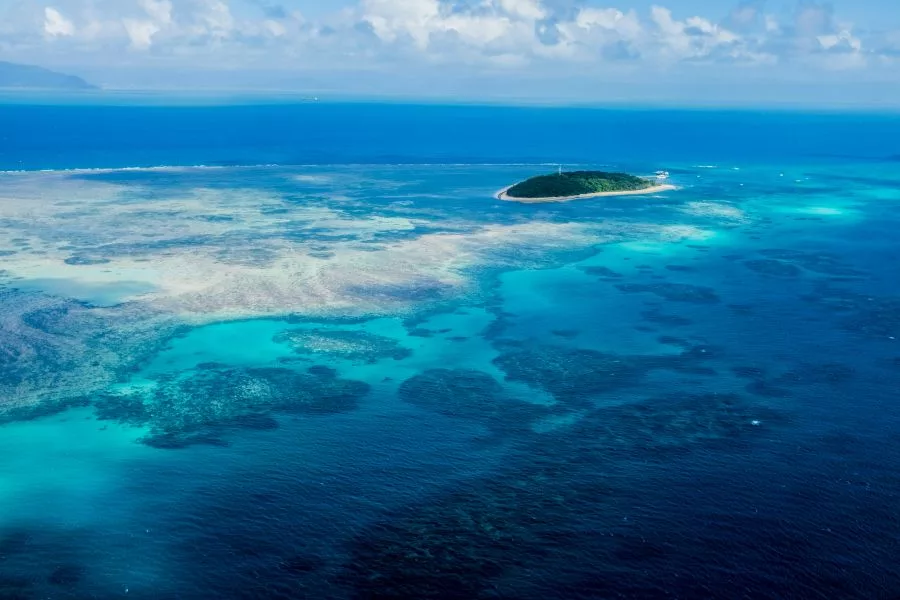
The Great Barrier Reef stands as both a marine wonder and a geological marvel, stretching over 2,300 kilometres along Australia’s northeastern coast. Its origins trace back millions of years, shaped by the gradual accumulation of coral skeletons atop ancient continental shelves. Layer upon layer of coral growth and fossilisation has built the world’s largest coral reef system, creating a living archive of Earth’s climatic and oceanic changes.
For travellers, the Great Barrier Reef offers immersive ways to explore its geological and biological treasures. Snorkelling and diving let you glide over coral gardens, swim alongside schools of fish, and observe the intricate structures that support this complex ecosystem. Guided tours, led by marine biologists and local experts, provide deeper insight into the reef’s formation, geology, and ongoing scientific research.
For more information, visit Australia.com.
Wave Rock (Western Australia)
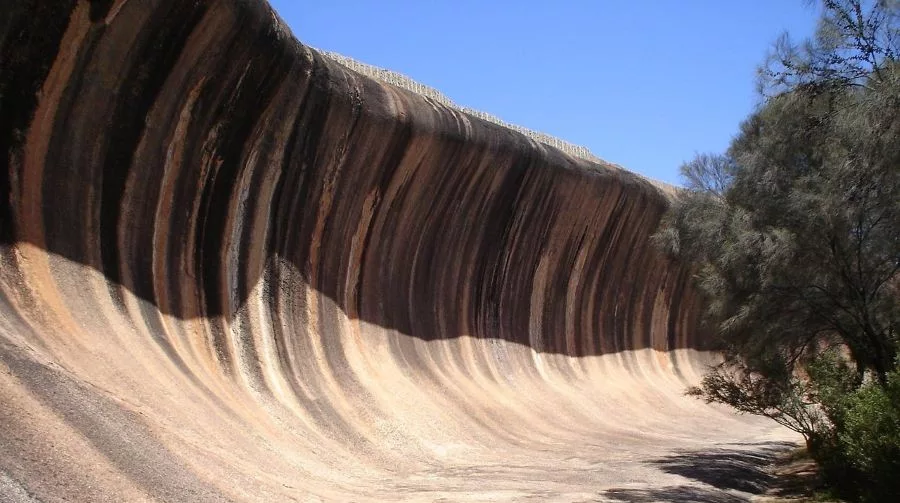
located near Hyden in Western Australia’s Wheatbelt region, Wave Rock is a must-see geological marvel that captivates visitors with its iconic granite wave-like appearance. This natural formation stands about 45 feet (14 meters) high and stretches approximately 360 feet (110 meters) long, resembling a giant ocean wave frozen just before it crashes onto the shore. Wave Rock is actually the northern face of a much larger granite outcrop called Hyden Rock, which is an ancient inselberg, an isolated hill rising abruptly from the surrounding flat plains, and dates back an astonishing 2.7 billion years.
Nearby, visitors can explore other fascinating geological and cultural attractions. Hippo’s Yawn, a large eroded rock formation resembling a hippopotamus’s open mouth, offers a quirky photo opportunity. Just a short distance away, Mulka’s Cave features ancient Aboriginal rock art, providing insight into the region’s Indigenous heritage. The nearby granite formation known as The Humps also offers hiking trails and panoramic views of the surrounding landscape.
For more information, visit the Western Australia website.
The Super Pit (Kalgoorlie, Western Australia)
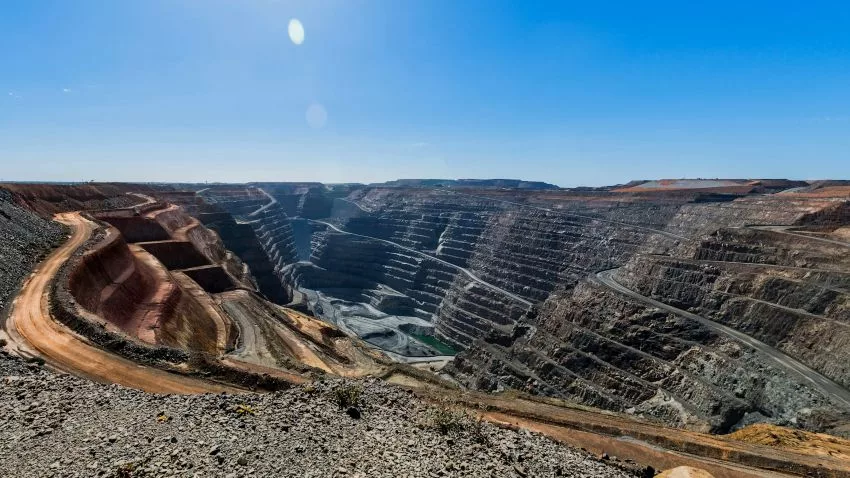
The Super Pit, officially known as the Fimiston Open Pit, stands as one of the world’s largest open-cut gold mines and a defining landmark of Kalgoorlie, Western Australia. Stretching approximately 3.5 kilometres long, 1.5 kilometres wide, and plunging over 600 metres deep, the Super Pit’s sheer scale is so immense it’s visible from space. This colossal operation sits atop the legendary Golden Mile, one of the richest gold-producing regions on the planet, with over 60 million ounces of gold extracted since the first discovery in 1893.
Guided tours offer a front-row seat to the mine’s operations and history. You’ll learn about the evolution of gold mining techniques, from early hand-dug shafts to today’s sophisticated open-cut methods. Tours delve into the economic impact of the mine, which produces hundreds of thousands of ounces of gold annually and employs around 1,100 people directly on site. The Golden Mile’s story is also a tale of technological innovation, resilience, and the enduring allure of gold.
For more information, visit the Super Pit website.
Flinders Ranges (South Australia)
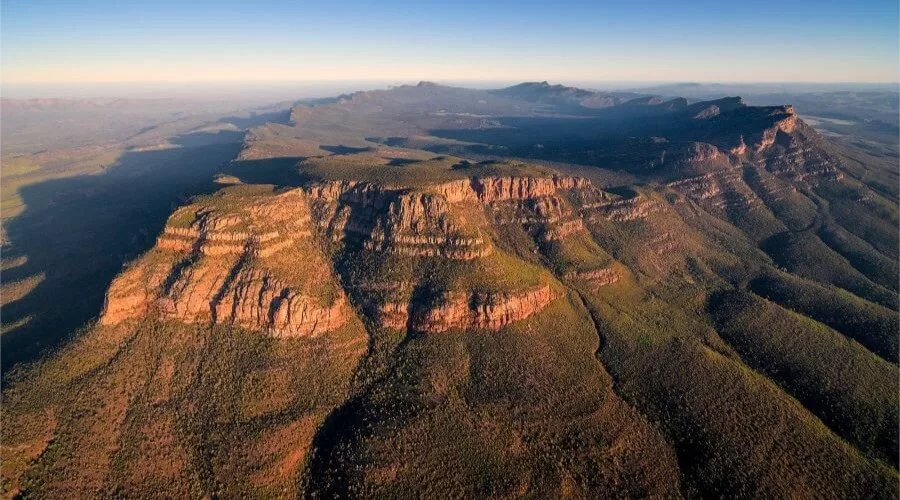
The Flinders Ranges in South Australia stand as one of the continent’s most captivating geological destinations, offering a dramatic tapestry of ancient mountain landscapes, unique rock formations, and fossil sites of global significance. These rugged ranges, formed over 600 million years ago, showcase folded and eroded sedimentary rocks that tell the story of Earth’s tumultuous geological past. The iconic Wilpena Pound, a natural amphitheatre of mountains, is a highlight—its sweeping curves and sheer cliffs reveal layers of rock shaped by aeons of uplift and erosion.
For those seeking adventure, the Flinders Ranges deliver with a network of hiking trails that traverse gorges, ridges, and valleys. Trails like the Heysen Trail and the Bunyeroo and Brachina Gorge. They lead to breathtaking viewpoints. Here you can gaze out over ancient landscapes and spot native wildlife such as emus, kangaroos, and wedge-tailed eagles. Geological tours, often led by expert guides, reveal the secrets of the region’s rock formations, fossil beds, and the processes that shaped them.
For more information, visit Australia.com
Lightning Ridge (New South Wales)
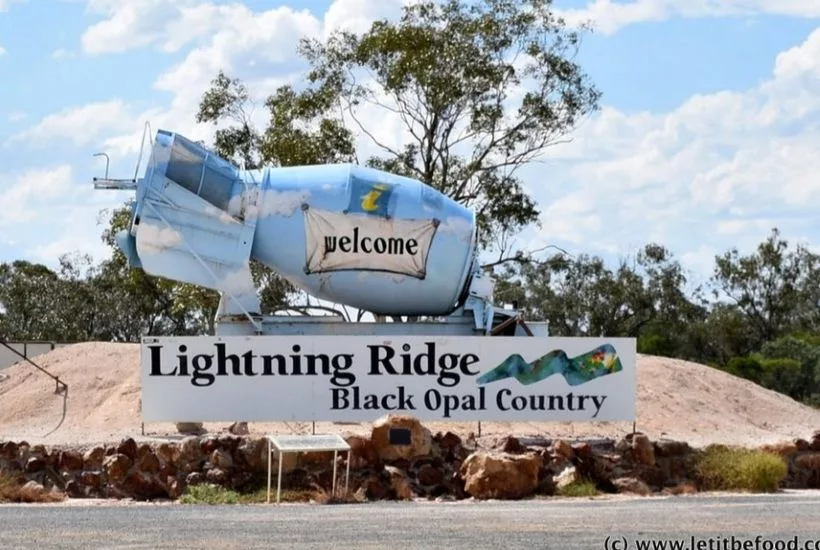
Lightning Ridge, nestled in outback New South Wales, is globally celebrated as the home of the rare and mesmerising black opal. These opals, prized for their deep body colour and vibrant play-of-colour, attract gem enthusiasts, collectors, and curious travellers from around the world.
When you visit Lightning Ridge, you step into a community shaped by the excitement of discovery and the enduring spirit of the opal fields. The town invites you to fossick for opals yourself, designated fossicking areas and easy-to-obtain permits make it accessible for both beginners and seasoned prospectors. Local shops provide all the tools and guidance you need to start your search, and you might even unearth your own piece of Australia’s national gemstone.
Tip: Every year, in July, there is an Opal Festival in Lightning Ridge. The Lightning Ridge Opal & Gem Festival boasts over 150 stalls with a huge range of products including gemstones, tools, lapidary supplies and lifestyle products.
For more information, go to VisitNSW.
Mount Isa & Cloncurry (Queensland)
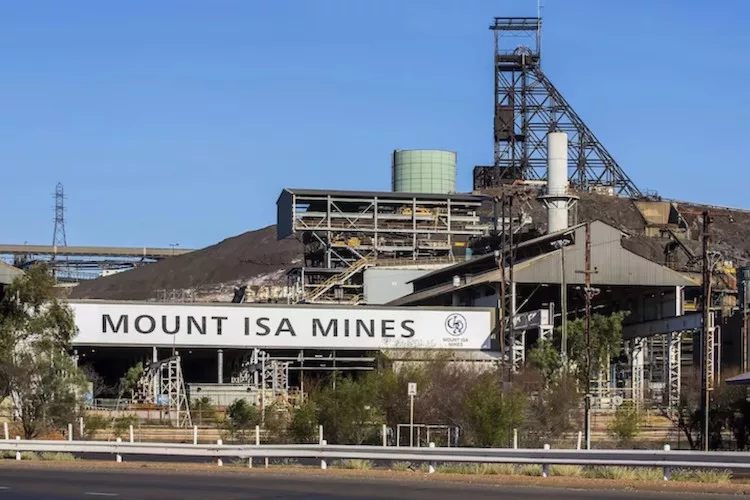
Mount Isa and Cloncurry stand as legendary hubs for copper, silver, lead, and zinc mining, each with a fascinating story etched into the Australian outback. The mining legacy in this region began in the late 19th and early 20th centuries, when prospectors like John Campbell Miles and Ernest Henry uncovered some of the richest mineral seams in the world. Miles’ 1923 discovery near the Leichhardt River led to the founding of Mount Isa Mines, which quickly attracted hundreds of prospectors and transformed the area into a bustling mining community.
In Cloncurry, copper discoveries in the 1870s spurred the development of the Great Australia Mine and established the town as a vital service centre for the surrounding copper fields. Today, both towns celebrate their mining heritage with immersive experiences for visitors.
Both towns offer authentic outback experiences beyond mining. You can attend local festivals, meet residents whose families have worked the mines for generations, and witness the rugged beauty of Queensland’s northwest. The mining operations remain active, so you’ll see the scale of modern mineral extraction up close, reinforcing the region’s reputation as a powerhouse of Australia’s mineral wealth.
By visiting Mount Isa and Cloncurry, you step into the heart of Australia’s mining frontier, where history, geology, and community spirit converge in the red dust of the outback.
For more information, please visit the Discover Mount Isa and Experience Cloncurry.
Karijini National Park (Western Australia)
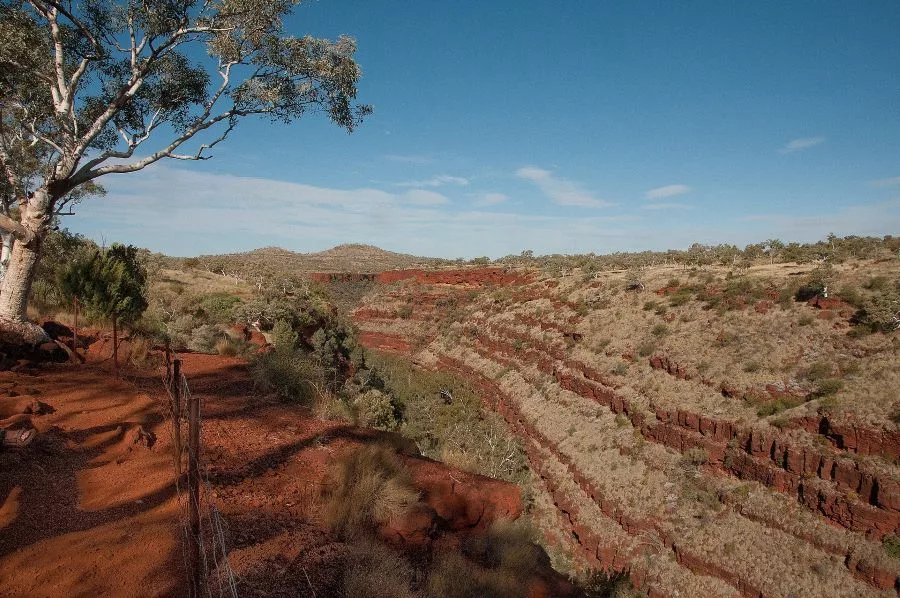
Karijini National Park, located in Western Australia’s Pilbara region, stands out as one of the country’s most spectacular geological destinations. Here, you’ll find a landscape carved over more than 2.5 billion years, with deep, narrow gorges, towering red cliffs, and striking waterfalls that plunge into crystal-clear pools. The park’s ancient rock layers, some of the oldest exposed on Earth, reveal a dramatic geological history shaped by tectonic forces, erosion, and time.
Adventurers flock to Karijini to hike its famous trails, which lead you through breathtaking chasms such as Hancock Gorge, Weano Gorge, and Dales Gorge. Each route offers a unique perspective on the park’s geology, from banded iron formations to polished rock walls that shimmer in the sunlight.
Looking for gorge-side glamping in the heart of Karijini National Park? Karijini Eco Retreat might be exactly what you’re looking for!
For more information, please visit Explore Parks WA website.
Tasmania’s Mineral and Fossicking Sites
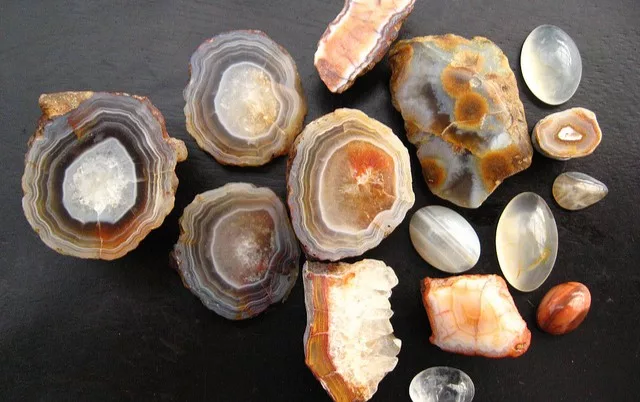
Tasmania stands out as a premier destination for diverse fossicking opportunities, from Killiecrankie Bay’s topaz to Derby’s tin and sapphires and Miena’s smoky quartz, drawing mineral enthusiasts and families alike to its scenic landscapes. The island’s rich geological history has gifted it with a variety of accessible sites, each offering the thrill of discovery and a glimpse into Tasmania’s mineral heritage.
Before you set out, always follow local regulations and obtain any necessary permits. The Tasmanian government provides clear guidelines on where and how you can fossick legally and sustainably. Many sites are specifically designated for recreational fossicking, ensuring that your activities have minimal impact on the environment.
For more information, please visit Tasmania’s Government website.
Planning Your Geological Adventure
Geological and mineral destinations in Australia promise unforgettable experiences, but preparation is key to making your adventure safe, enjoyable, and responsible. Take these proactive steps to ensure you get the most out of your journey.
Essential Travel Tips
- Pack for the terrain. Choose sturdy footwear to handle rocky paths, caves, and uneven ground. Bring sun protection, wide-brimmed hats, sunglasses, and high-SPF sunscreen to shield yourself from Australia’s intense UV rays. Always carry plenty of water, especially when venturing into the outback or remote mining areas, where services can be sparse.
- Prepare for remote conditions. Study detailed maps and use digital navigation tools to chart your route. Identify refuelling points, water sources, and emergency contacts before you set out. Download offline maps and ensure your vehicle is in top condition for long distances across rugged terrain.
- Respect Indigenous lands and local communities. Research your destinations ahead of time and check if you need permits to access national parks or Aboriginal-owned land. Many regions have straightforward online permit systems, but some licenses require advance notice, so apply early. Always follow posted guidelines and honour requests from Traditional Owners.
Responsible Fossicking and Geotourism
- Know the rules before you collect. Each Australian state has specific fossicking regulations. Review these rules online or at local visitor centres to understand where and what you can collect legally. Some areas require permits, which you should secure before your trip.
- Practice leave-no-trace principles. Minimise your impact by sticking to established trails, taking only photographs unless fossicking is permitted, and never disturbing wildlife or cultural sites. Leave the environment as you found it, ensuring future travellers can enjoy these wonders too.
- Seek local information and permits. Visit regional visitor centres or contact local authorities for up-to-date advice on site conditions, safety tips, and permit requirements. These resources can also connect you with guided tours and educational programs that enrich your experience.
By taking these steps, you actively protect Australia’s geological treasures and foster positive relationships with local communities. Thoughtful planning transforms your geological adventure into a safe, respectful, and truly memorable journey.
Conclusion
Australia’s top geological and mineral destinations invite you to embark on a journey that blends adventure, education, and awe-inspiring beauty. From the dramatic monoliths of Uluru and the ancient gorges of Karijini to the colourful opal fields of Coober Pedy and the fossil-rich Flinders Ranges. Each site offers a unique window into the continent’s dynamic natural history. As you explore these remarkable places, you’ll not only witness the forces that have shaped Australia over billions of years. But also gain a deeper appreciation for the stories and cultures connected to the land.
Frequently Asked Questions (FAQs)
Most sites are best visited during cooler, drier months (April–September), especially in the outback.
Yes, permits are often required for fossicking and some mine tours. Check local regulations in advance.
Many destinations offer family-friendly activities, but always assess accessibility and safety for children.
Join guided tours, visit local museums, and consult visitor centres for educational resources and expert insights.
Ready to Start Your Gemstone Journey?
Don’t wait to discover the world of gemstones! Explore these essential reads right away.
Fascinated by this article and want to deepen your gemstone expertise? Dive into our comprehensive Gemstone Encyclopedia. Here, you’ll discover detailed information about hundreds of precious and semi-precious stones, including their properties and values.
For those interested in the rich cultural significance and fascinating stories behind these treasures, our History section offers captivating insights into how gemstones have shaped civilisations. Or perhaps you’d like to learn more about birthstones?
And if you’re considering gemstones as more than just beautiful adornments, visit our Precious Metal Investing guide. Here you will learn how these natural wonders can become valuable additions to your investment portfolio.
